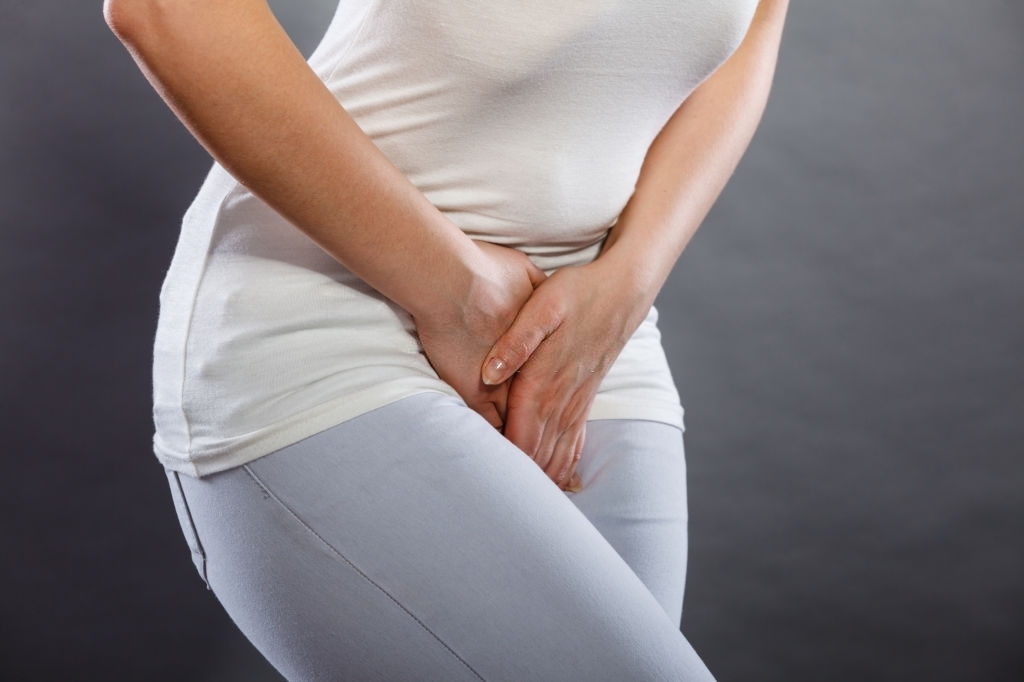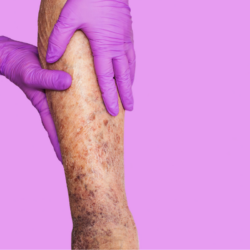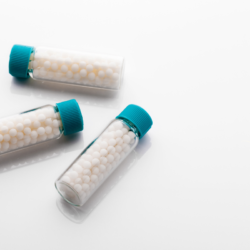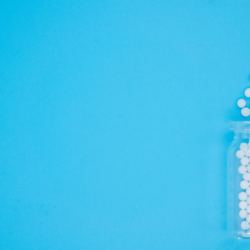In France, urinary tract infections (UTIs) are a frequent reason for medical consultations and antibiotic prescriptions. There is a marked seasonal pattern to these infections, with peaks during the summer months. According to a study based on data from IMS-health France, the annual incidence of presumed UTIs among women in general practice is estimated at 3,200 per 100,000 women, underlining the importance of their prevention and effective treatment (1).
Given this high prevalence, homeopathy offers an interesting complementary approach to the management of UTIs, particularly recurrent ones. This article aims to explore the use of homeopathy in the treatment of recurrent UTIs, also highlighting the potential efficacy of cranberry, a natural remedy, in preventing these infections.
In this article, we will include cystalgia with clear urine that does not involve bacteriuria or pyuria and we will exclude genital infections responsible for an acute urethral syndrome(Trichomonas vaginalis, Chlamydia).
Common causes of urinary tract infections
Urinary tract infections are generally caused by bacteria, particularly Escherichia coli, which enter the urethra and migrate to the bladder. In women, the proximity of the urethra to the anus and vagina increases the risk of bacterial contamination. Risk factors include:
- Active sexuality: Increases the risk of bacterial penetration.
- Use of certain types of contraception: such as diaphragms or spermicides.
- Menopause: Decrease in oestrogen levels, affecting bacterial flora.
- Anatomical abnormalities: Such as vesico-ureteral reflux.
- Underlying conditions: Such as diabetes, which alters the immune response.
- Frequent use of antibiotics: Can alter the natural flora and encourage bacterial resistance.
Key symptoms to recognise
Symptoms of urinary tract infections vary but often include:
- Dysuria: Pain or burning sensation when urinating.
- Pollakiuria: Frequent need to urinate, often in small amounts.
- Haematuria: Presence of blood in the urine.
- Pelvic pain: In women, particularly in the bladder area.
- Fever and chills: Signs of a potentially more serious infection, such as pyelonephritis.
The role of homeopathy in prevention
In addition to medical treatment, preventive measures such as proper urinary hygiene, adequate fluid intake and judicious use of antibiotics are essential. Homeopathy, used as a complement, can help manage symptoms and prevent recurrences. Natural remedies such as cranberry can also play a role in prevention by preventing bacteria from adhering to the bladder walls.
Effectiveness of homeopathy: results of clinical trials
Although homeopathy is being considered as an option in the treatment of recurrent urinary tract infections, it is important to note the results of recent scientific research. By the end of 2022, 271 randomised controlled trials of homeopathic treatment had been published, covering 144 conditions. Of these studies, 43% showed positive results for the efficacy of homeopathy, while 3% had negative results, and 54% were inconclusive. These data underline the importance of a balanced and informed approach to the use of homeopathy.
Symptomatic medicines for urinary tract infections
The spontaneous evolution of this urinary pathology is towards chronicity, with increasingly frequent and long-lasting episodes; symptomatic medicines are therefore taken :
- As a preventive measure, taken once or twice a day, the drug being chosen according to the symptoms of the previous attack.
- As a cure, in the early stages of an acute attack, in repeated doses. In the latter case, chosen according to the symptoms and modalities of the current attack, they can be taken in conjunction with antibiotic therapy when the latter is justified.
In addition to drug therapy, diuresis treatments are therefore always necessary. A distinction is made between drugs indicated for infectious forms of the disease and drugs for cystalgia with clear urine.
Drugs for infectious forms :
This medicine is suitable for cystitis with pollakiuria and dysuria. Violent, burning pain occurs before, during and after micturition; the urine is also dark, sometimes bloody. There may be some degree of concomitant sexual irritation.
Dosage: Take 1 dose in 9 or 15 CH.
The clinical manifestations of this medicine are even more intense than those of Cantharis. They are dominated by hyperalgesic tenesmus. Urine is scanty, dark and even frankly bloody. The general signs of the drug are present: hectic fever with chills running down to the skin, profuse sweating that does not relieve the discomfort of the fever, foul breath and nocturnal worsening of symptoms.
Dosage: Take 1 dose in 9 or 15 CH.
The pains are burning, relieved by warm applications. They are mainly accompanied by severe asthenia.
Dosage: Take 1 dose in 9 or 15CH.
This medicine is suitable when there is cystitis with micro or macroscopic haematuria.
Dosage: Take 1 dose in 9 or 15CH.
This medicine can be taken by the particular appearance of the urine: haematuria of black or dark blood, which forms a deposit like coffee grounds and of aromatic odour, classically compared to a violet smell.
Dosage: Take 5 granules 3 times a day in 5CH.
This medicine can be taken by people who urinate often, profusely and painfully; the pain increases at the end of urination and persists once urination is complete. During the period when the bladder is filling up, they feel bladder heaviness, which is aggravated by pressure or contact.
Recommended dosage: Take 5 granules 3 times a day in 5CH.
This medicine is indicated when the urine is abundant, cloudy and has a bad odour, but the micturition is not painful or painless.
Dosage: Take in 6DH, 20 drops 2 times a day.
Medication for cystalgia with clear urine :
This clinical form is particularly common in women in the para- or post-menopausal period. Concomitant neurovegetative dystonia justifies the use of drugs such as Ignatia, Moschus, etc. Hormonal imbalances can be corrected by diluting hormones. Post-menopausal vaginal atrophy requires local hormone therapy in manageable doses.
Two symptomatic drugs are frequently indicated:
This drug is indicated for cystalgia with clear urine in patients who have intermictional burning that stops when they urinate. It is more specifically indicated for cystalgia following mechanical trauma: cystalgia of “young brides”, cystalgia following catheterisation, after dilation of the urethra, etc.
Recommended dosage: Take 5 granules in 9, 15 or 30CH doses.
This medicine is suitable for bladder irritations which give an intense burning sensation. Urination is abundant and the urine is clear.
Recommended dosage: Take 5 granules in 5CH.
Local remedies for urinary tract infections
The chronic nature of urinary tract infections suggests a sycotic reaction mode and their repetition suggests a psoric reaction mode.
Sycotic reaction mode drugs :
This is the main drug of the sycotic reaction mode; its use is therefore almost systematic in this type of urinary pathology. Its indication is reinforced if the patient has a history of recurrent genital infections and criteria of a sensitive type (appearance of the skin and appendages in particular).
Thuja is more often taken for these reasons than for its urinary pathogenetic signs: pain at the end of micturition, post-micturition sensation as if urine were dripping into the urethra.
Dosage: Take as 9, 15 or 30CH, from 5 daily granules to a weekly dose.
Indicated above all in women with an associated pelvic, gynaecological or venous pathology, this medicine is justified when urinary infections are accompanied by an urgent need to urinate with a sensation of bladder heaviness and cloudy, fetid urine. Episodes of constipation often precede infectious outbreaks. Signs of the sensitive type are almost always found; they predominate in the choice of Sepia for the treatment of cystalgia with clear urine.
Dosage: Take as 9, 15 or 30CH, from 5 daily granules to a weekly dose.
A remedy for chronic suppuration, Silicea is suitable for recurrent urinary tract infections regularly accompanied by pyuria.
Dosage: Take in 15 or 30CH to dry up the suppuration, from 5 granules a day to one dose a week.
A biotherapeutic of the sycotic reaction mode, Medorrhinum can be taken when there is a history of repeated urogenital infections. Its use is also justified in cases of renal pain relieved by copious urination.
Dosage: Take 15CH in a monthly or fortnightly dose.
Psoric reaction mode medicines :
Medicines can also be taken to treat all the symptoms of patients. We will mention here only the main associated morbid tendencies which form part of the pathogenetic picture of the medicines most frequently used in these urinary disorders:
Constipation and depressive tendency.
Gynaecological, circulatory, digestive and emotional disorders in adolescents or young women.
Tends to lithiasis, digestive and metabolic disorders.
Gynaecological disorders, circulatory disorders accompanied by heat intolerance and psychological disorders.
Digestive and gynaecological disorders occurring in cold women who are rather apathetic.
Urinary disorders which are iterative, sudden, violent, repetitive or which may alternate with other morbid disorders in sthenic subjects.
Urinary disorders in subjects prone to ENT or pulmonary infectious disorders.
Dosage: All these medicines are taken from 9 to 30CH, from 5 granules to a weekly dose, with the exception of Tuberculinum which is only taken once or twice a month in 9 or 15CH.
Cranberry: a natural ally against urinary tract infections
Cranberry and homeopathy can be used in conjunction with each other as part of an overall approach to preventing urinary tract infections. However, it is important to note that neither homeopathy nor cranberry is a cure for an active UTI.
Cranberries contain proanthocyanidins, which can prevent certain bacteria from attaching to the bladder walls, and therefore potentially help prevent UTIs.
An analysis of 50 randomised controlled trials (RCTs) involving 8,857 people showed that taking cranberries in juice, tablet or capsule form reduced the number of UTIs in women with recurrent UTIs, in children, and in people prone to UTIs following procedures such as bladder radiotherapy. However, there was no significant reduction in urinary tract infections in elderly men and women in retirement homes, in adults with neuromuscular bladder dysfunction, or in pregnant women (2).
References:
- https://inserm.hal.science/tel-01275795/
- https://www.cochrane.org/fr/





